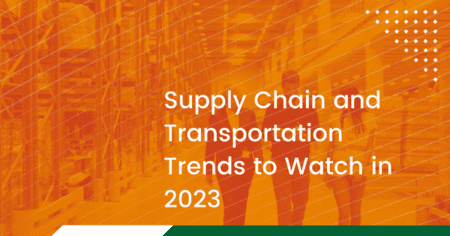The supply chain and transportation industries spent most of 2022 trying to rebalance themselves following the COVID-19 pandemic, only to deal with inflation, higher interest rates, a decrease in consumer spending, and rising fuel costs.
For shippers, however, it was not all bad news. Because of an uptick in consumer spending for much of 2020 and 2021, capacity was increasingly hard to come by. Now, however, capacity is increasing. This change gave shippers the leverage they did not have for nearly 24 months, leading to lower carrier prices.
How will all that affect the upcoming year? What are industry forecasters predicting for 2023?
Subscribe to the PLS Logistics Services blog to stay up to date
What to expect in 2023
Inflation and Interest rates will Remain High
Rising inflation and interest rates continue to be a worldwide issue following the pandemic. In particular, the United States saw consumer prices increase to a 40-year high of 9.1%, according to the U.S. Bureau of Labor Statistics. In response, the Federal Reserve raised interest rates to cool demand in the U.S. economy, hoping to tame inflation.
As we head into the new year, inflation is still high (consumer prices jumped 7.1% in November from 2021), but there are signs that it is cooling as CNBC is reporting that consumer prices rose less than expected in November.
A Looming Recession
The whole point of raising the interest rates during high inflation levels is to cool spending and economic growth. This helps move inflation back to acceptable levels. Of course, this practice could lead to a recession, but this is not always the case.
Either way, executives should already be preparing for a potential recession. A recession could affect a labor market that has struggled to bounce back after the pandemic. Moreover, the trend of workers seeking greater pay to keep up with inflation and labor issues (such as the nearly avoided rail worker’s strike in December) will likely continue.
Carriers Will Lower Rates
During the pandemic, a combination of higher consumer spending, labor shortages, and transportation gridlock lead to a lack of capacity and higher carrier rates across the board. Those conditions lead to very profitable times for carriers. As we enter 2023, however, demand is leveling off, and capacity is increasing.
Why is this happening? For one, lower consumer spending for one thanks to inflation. But the loosening of tight COVID restrictions worldwide continues to ease some of the transportation gridlock.
This is all excellent news for shippers but not so much for carriers. Shippers will now be able to negotiate more favorable rates. Carriers, however, must compete for business and customer loyalty by lowering rates.
Moving From Reactive to Proactive
The supply chain and transportation industry have been thrown one curve ball after another throughout the last 24 months. Businesses have had to become incredibly agile to deal with incoming problems and sometimes pivot the direction of their business depending on the situation. Now, however, companies can begin to rebalance and plan for the future.
It is important during the rebalancing stage to reflect on what works for your business and what does not. Consider the following four topics:
• Manufacturing
• Transportation
• Storage
• Distribution
Is your business facing issues with one or more of them? Then it is time to redevelop a long-term plan going into the new year. As you implement your new plan, try not to hit the panic button too quickly. Remain patient.
Visibility, Data, and Digitization Is Not Going Anywhere
All supply chain managers want to track goods and shipments through their respective supply chains as they know that data and visibility benefit almost all aspects of a business. Added data helps companies meet customer demand and improve the bottom line.
PLS Logistics Services own transportation management system can give your company the data and visibility needed moving into 2023. Our TMS reduces human error, therefore increasing efficiency and accuracy. Additionally, the technology allows managers to optimize their supply chains throughout the process.
Another trend to watch in 2023 is the greater use of artificial intelligence (AI) and machine learning, specifically for demand and sales forecasting and product inspection. AI removes human error from some operations and can save businesses time and money while providing a significant return on investment.
Geopolitics
The Russia conflict in Ukraine was a significant factor in supply chain complications throughout 2022, specifically the price of fuel. As the conflict continues into 2023, it will likely still cause supply chain issues.
The United States’ trade relationship with China is also worth monitoring as members of congress are pushing for stricter policies with the nation.
Consumers Continue to Demand Greener Practices
Whether it is government regulations or consumer pressure, the push is on for companies to become greener. Businesses must continue to search for and adapt sustainable efforts affecting their entire operation, whether sourcing raw materials or evaluating greenhouse gas emissions during product transportation.
A trend to watch in 2023 is circular supply chains, where manufacturers refurbish old products to either return them or return them to the shelves to be resold. This means more recycled and refurbished products will come to consumers in the next few years.
Utilize a 3PL
No matter what 2023 brings, using a 3PL like PLS Logistics Services can help take the logistical burden off your shoulders. Our resources and carrier network of over 55,000 can help you get your freight to its destination on time.


